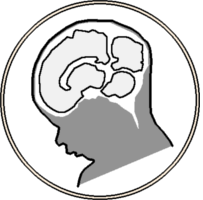Marami, Bahram, Seyed Sadegh Mohseni Salehi, Onur Afacan, Benoit Scherrer, Caitlin Rollins, Edward Yang, Judy Estroff, Simon Warfield, and Ali Gholipour. 2017. “Temporal slice registration and robust diffusion-tensor reconstruction for improved fetal brain structural connectivity analysis”. Neuroimage 156: 475-88.
Abstract
Diffusion weighted magnetic resonance imaging, or DWI, is one of the most promising tools for the analysis of neural microstructure and the structural connectome of the human brain. The application of DWI to map early development of the human connectome in-utero, however, is challenged by intermittent fetal and maternal motion that disrupts the spatial correspondence of data acquired in the relatively long DWI acquisitions. Fetuses move continuously during DWI scans. Reliable and accurate analysis of the fetal brain structural connectome requires careful compensation of motion effects and robust reconstruction to avoid introducing bias based on the degree of fetal motion. In this paper we introduce a novel robust algorithm to reconstruct in-vivo diffusion-tensor MRI (DTI) of the moving fetal brain and show its effect on structural connectivity analysis. The proposed algorithm involves multiple steps of image registration incorporating a dynamic registration-based motion tracking algorithm to restore the spatial correspondence of DWI data at the slice level and reconstruct DTI of the fetal brain in the standard (atlas) coordinate space. A weighted linear least squares approach is adapted to remove the effect of intra-slice motion and reconstruct DTI from motion-corrected data. The proposed algorithm was tested on data obtained from 21 healthy fetuses scanned in-utero at 22-38 weeks gestation. Significantly higher fractional anisotropy values in fiber-rich regions, and the analysis of whole-brain tractography and group structural connectivity, showed the efficacy of the proposed method compared to the analyses based on original data and previously proposed methods. The results of this study show that slice-level motion correction and robust reconstruction is necessary for reliable in-vivo structural connectivity analysis of the fetal brain. Connectivity analysis based on graph theoretic measures show high degree of modularity and clustering, and short average characteristic path lengths indicative of small-worldness property of the fetal brain network. These findings comply with previous findings in newborns and a recent study on fetuses. The proposed algorithm can provide valuable information from DWI of the fetal brain not available in the assessment of the original 2D slices and may be used to more reliably study the developing fetal brain connectome.
Last updated on 02/27/2023
